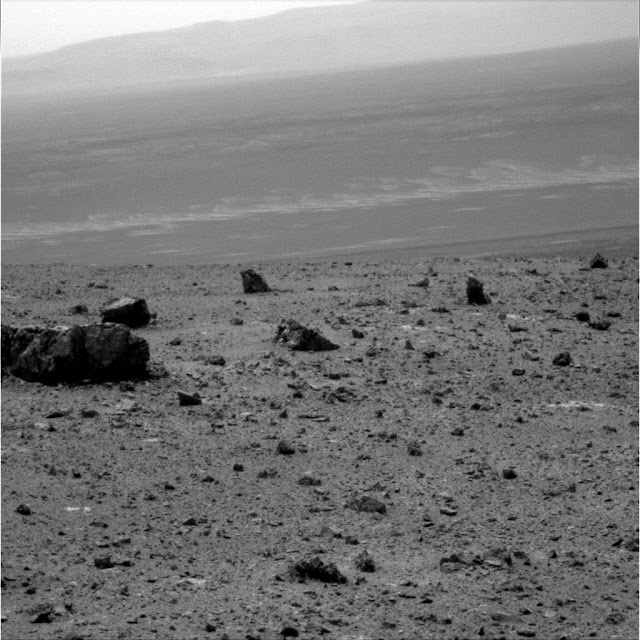La Valles Marineris è il più grande sistema di canyon del sistema solare. Sovrapposta ad una mappa degli Stati Uniti, si estenderebbe da Los Angeles a Washington, D.C., per circa 4.000 chilometri (due volte la distanza tra Roma e Londra) ! L’ immagine qui presentata mostra perciò solo una piccolissima parte dell’ intero sistema.
Questa osservazione ci mostra delle frane (fenomeni chiamati anche “dispersioni di massa”) che hanno assunto l’ aspetto di gole sulle pareti interne a strati della Valles Marineris. Si possono vedere anche nicchie e canali, come nell’ immagine PSP_004396_1675. Purtroppo la qualità di quest’ ultima immagine è molto scarsa a causa di una tempesta di sabbia e polvere in corso al momento dello scatto, per cui una futura, nuova ripresa della zona ci potrà fornire ulteriori informazioni di dettaglio sulla forma e sulle dimensioni delle formazioni qui presenti.
Photo credit: NASA/JPL/L'Università dell’Arizona
Note: The
HiRise team writes captions to their photos in languages other than English. The above caption, for example, is in
Italian. Below is the English translation, a la
Google Translate. (Unfortunately, the quality of the translation is not quite as good as one might hope.) This particular landslide is located in
Capri Chasma, which is part of the enormous
Valles Marineris system.
Landslide in Valles Marineris
The Valles Marineris is the largest canyon system in the solar system. Superimposed on a map of the United States, it would stretch from Los Angeles to Washington, DC, for about 4,000 kilometers (twice the distance between Rome and London)! The image presented here shows, therefore, only a small part of the whole system.
This observation shows landslides (also called the phenomenon "mass disturbances") who have taken the look of layered grooves on the inner walls of the Valles Marineris. You can also see niches and channels, as in image PSP_004396_1675. Unfortunately the quality of this last image is very poor due to a sand and dust storm in progress at the time of shooting, so a future resumption of the new area we can provide additional detailed information about the shape and size of the training present here.































